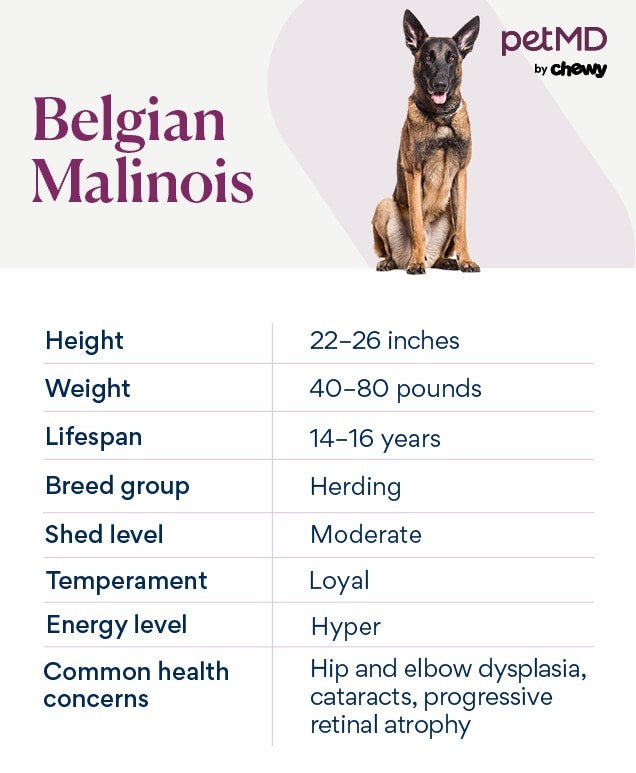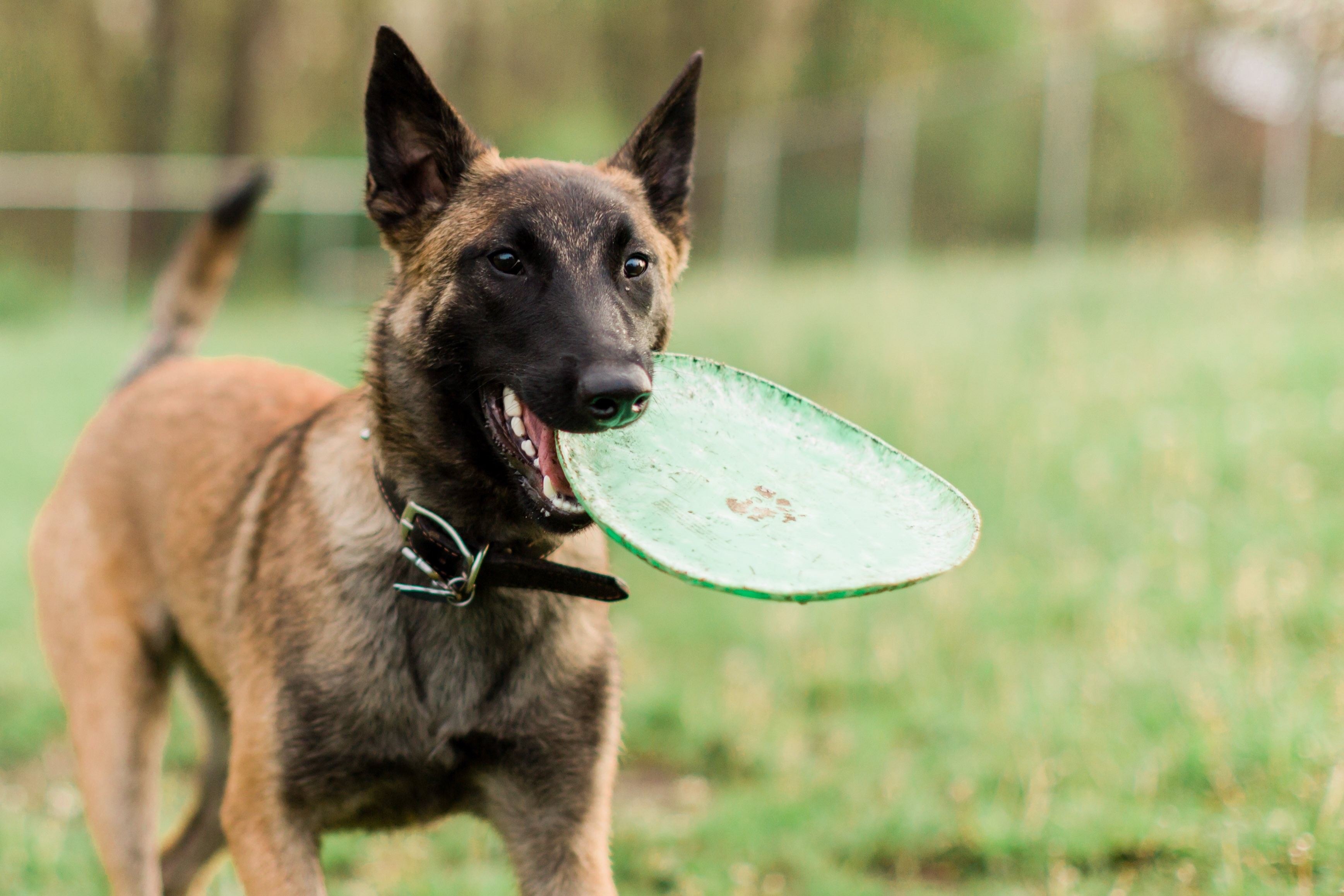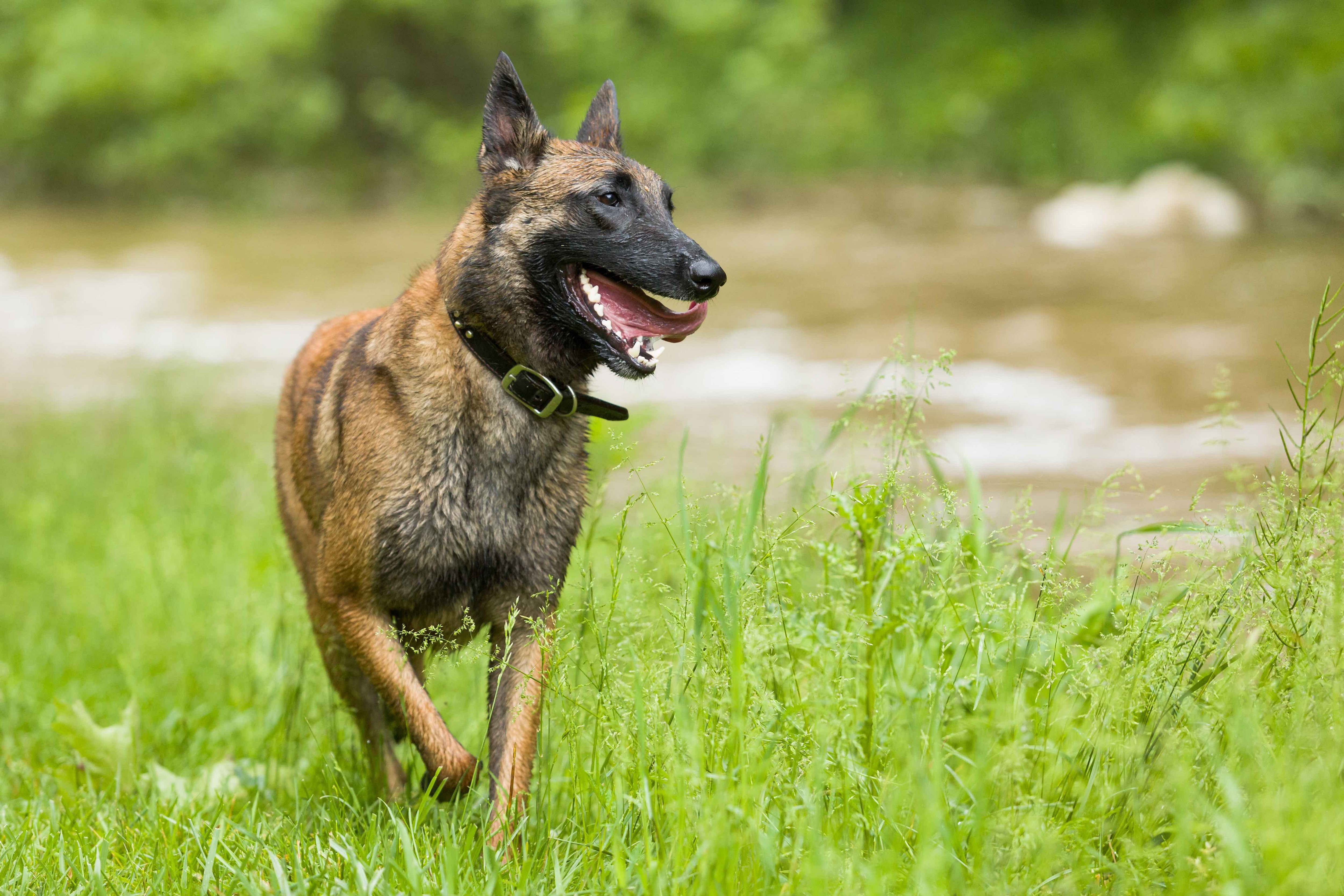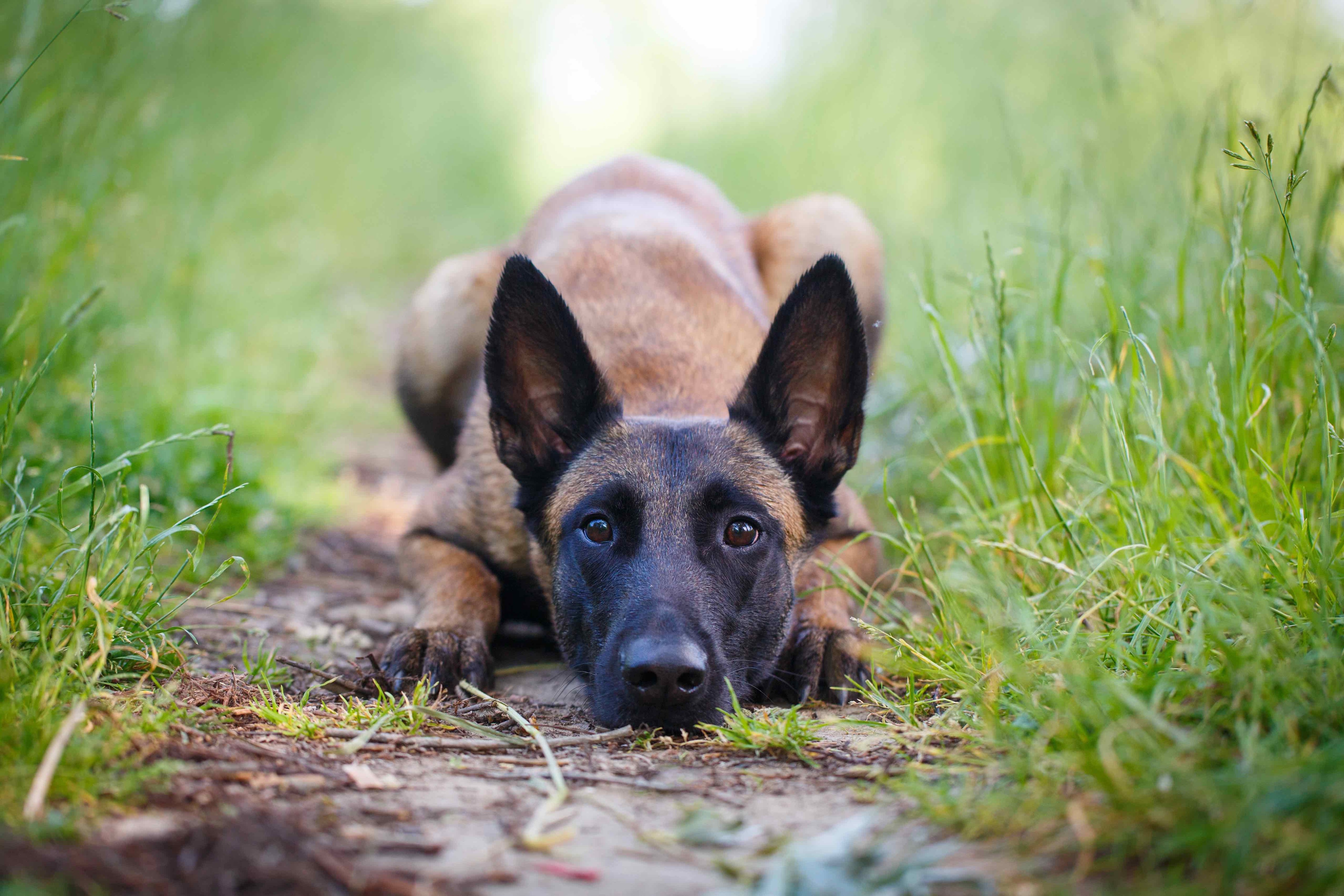Can You Have A Belgian Malinois As A Pet? Absolutely, but understanding the breed’s unique needs is crucial. At PETS.EDU.VN, we help you navigate the exciting journey of pet ownership, offering expert advice and resources to ensure a harmonious life with your canine companion. Discover if this intelligent and energetic breed is the right fit for your lifestyle, and unlock the secrets to raising a happy, healthy, and well-behaved Belgian Malinois. Learn about their exercise requirements, training needs, and potential health concerns, ensuring you’re fully prepared to welcome this incredible dog into your home.
1. Understanding the Belgian Malinois
The Belgian Malinois, often mistaken for a German Shepherd, is a highly intelligent, confident, and energetic dog breed originating from Belgium. Initially bred as herding dogs near the city of Malines, their versatility and work ethic have led them to excel in various roles, including police work, search and rescue operations, and detection tasks. These dogs thrive when given a job to do, making them exceptional companions for active and experienced owners willing to provide ample physical and mental stimulation.
Belgian Malinois are known for their unwavering loyalty and intelligence. However, they require significant exercise and mental engagement to prevent destructive behaviors. Prospective owners should be prepared to dedicate time and effort to meet their needs.
2. Assessing Your Lifestyle: Is a Malinois Right for You?
Before bringing a Belgian Malinois into your home, it’s essential to evaluate your lifestyle and determine if you can meet the breed’s demanding requirements. Here are some key considerations:
- Activity Level: Are you an active individual or family who enjoys outdoor activities such as running, hiking, or biking?
- Time Commitment: Can you dedicate at least 40 minutes daily to intense exercise and training sessions?
- Experience: Do you have prior experience with dog training, particularly with high-energy breeds?
- Living Situation: Do you have a spacious, secure yard where your Malinois can run and play?
- Commitment to Training: Are you prepared to invest in professional training and socialization from an early age?
If you can confidently answer yes to these questions, a Belgian Malinois may be a good fit. However, if you lead a more sedentary lifestyle or lack experience with demanding breeds, it’s best to explore other options.
3. Exercise Needs: Unleashing the Energy
Belgian Malinois are high-energy dogs that require substantial exercise to stay happy and healthy. Daily walks simply aren’t enough; they need intense aerobic activity to burn off their energy. Aim for at least 40 minutes of rigorous exercise each day, such as:
- Running: A five-mile run each morning can help expend some of their boundless energy.
- Hiking: Exploring trails together provides mental and physical stimulation.
- Biking: Training your Malinois to run alongside your bike is a great way to exercise together.
- Agility Training: This challenging activity engages both their mind and body.
- Herding: If you have access to livestock, herding can fulfill their natural instincts.
- Obedience Competitions: Participating in competitions provides a structured outlet for their energy and intelligence.
Without sufficient exercise, Belgian Malinois can become bored and destructive, leading to unwanted behaviors such as chewing, digging, and excessive barking.
4. Training and Socialization: Building a Well-Adjusted Companion
Consistent training and socialization are essential for raising a well-behaved Belgian Malinois. Start early, ideally from puppyhood, and continue throughout their life. Here are some key aspects to focus on:
- Obedience Training: Teach basic commands like sit, stay, come, and down.
- Socialization: Expose your Malinois to various people, dogs, and environments to prevent fear or aggression.
- Positive Reinforcement: Use rewards such as treats and praise to motivate and encourage good behavior.
- Professional Guidance: Consider working with a professional dog trainer experienced with the breed.
- Consistency: Be consistent with your commands and expectations to avoid confusion.
Early socialization is crucial to ensure your Belgian Malinois develops into a well-adjusted and confident companion. Expose them to different sights, sounds, people, and animals in a controlled and positive manner.
5. Belgian Malinois Temperament and Personality
Belgian Malinois are known for their unwavering loyalty and form strong bonds with their owners. They are not the type of dog that can be left alone in the backyard; they crave human interaction and want to be involved in their owner’s activities. Key traits include:
- Loyalty: They are deeply devoted to their family and will protect them fiercely.
- Intelligence: They are highly intelligent and quick learners, making training relatively easy.
- Energy: They have boundless energy and need a job to do to stay happy.
- Sensitivity: They are sensitive dogs and respond best to positive reinforcement training methods.
- Watchfulness: They are naturally watchful and can be wary of strangers, making them excellent guard dogs.
6. Potential Behavioral Issues: Addressing Challenges
Without proper training and exercise, Belgian Malinois can develop behavioral issues such as:
- Destructive Chewing: They may chew on furniture, shoes, and other items out of boredom or frustration.
- Excessive Digging: They may dig holes in the yard as an outlet for their energy.
- Barking: They may bark excessively if they are bored, anxious, or protective.
- Chasing: Their high prey drive may lead them to chase cars, other animals, or even children.
- Herding: They may try to herd toddlers and children, which can be problematic.
Addressing these issues requires consistent training, ample exercise, and mental stimulation. If you’re struggling with behavioral problems, consult a professional dog trainer or behaviorist for guidance.
7. Diet and Nutrition: Fueling the Active Malinois
Feeding a Belgian Malinois a high-quality diet is essential for their overall health and well-being. Choose a dog food that is specifically formulated for active breeds and contains a nutritional statement from the Association of American Feed Control Officials (AAFCO). Consider these factors when selecting the best food for your Malinois:
- Protein Content: Look for a food that is high in protein to meet their energy requirements.
- Age Appropriateness: Feed your Malinois puppy puppy food until they are at least 1 year old, then switch to adult dog food.
- Activity Level: Adjust the amount of food based on their activity level.
- Individual Needs: Consult with your veterinarian to determine the best diet for your dog’s individual needs.
A balanced diet is crucial for maintaining the health and energy levels of a Belgian Malinois. Consult with your veterinarian to determine the best food and feeding schedule for your canine companion.
7.1. Feeding Schedule
Typically, Belgian Malinois should be fed twice daily—once in the morning and once in the evening. Puppies may need to eat more frequently, up to four times every day.
7.2. Food Quantity
The amount of food you feed your Malinois depends on factors such as age, activity level, and size. Start with the recommended amount on the dog food bag and adjust as needed. Monitor your dog’s weight and body condition to ensure they are not over- or underfed.
7.3. Nutritional Supplements
In most cases, a healthy Malinois eating a high-quality diet won’t need nutritional supplements. However, your veterinarian may recommend supplements if your dog has specific health concerns.
7.4. Treats
Treats can be a valuable tool for training, but they should be given in moderation. Limit treats to no more than 10% of your dog’s total daily calories to prevent weight gain and nutritional imbalances.
8. Grooming Needs: Maintaining a Healthy Coat
Belgian Malinois have a short, waterproof coat that is relatively easy to care for. However, they do shed seasonally, so regular grooming is necessary to minimize shedding. Key grooming tasks include:
- Brushing: Brush their coat several times a week with a medium-bristle brush or grooming glove to remove loose hair and promote healthy skin.
- Bathing: Bathe them as needed to keep them clean, but avoid over-bathing, which can dry out their skin. Use a dog-specific shampoo tailored for their skin and pH.
- Nail Trimming: Trim their nails regularly to prevent overgrowth and discomfort.
- Ear Cleaning: Check their ears monthly for signs of infection and clean them with a vet-recommended ear cleaner.
- Dental Care: Brush their teeth daily to prevent dental disease and schedule regular dental cleanings with your veterinarian.
Regular grooming is essential for maintaining a healthy coat and skin in Belgian Malinois. Brushing, bathing, nail trimming, ear cleaning, and dental care should all be part of their routine.
8.1. Skin Care
Belgian Malinois are generally not prone to skin allergies, but it’s still important to protect their skin. Keep them on year-round heartworm, flea, and tick prevention to avoid skin irritations and diseases.
8.2. Coat Care
Regular brushing is essential for managing shedding and maintaining a healthy coat. A medium-bristle brush or grooming glove works well for removing loose hair and distributing oils throughout the coat.
8.3. Eye Care
Given their breed risk for progressive retinal atrophy (PRA) and cataracts, it’s important to monitor their eyes for any signs of cloudiness or redness. If you notice anything unusual, consult your veterinarian immediately.
9. Health Concerns: Knowing the Risks
While Belgian Malinois are generally healthy dogs, they are predisposed to certain health conditions, including:
- Hip Dysplasia: A hereditary condition that affects the hip joint, leading to pain and arthritis.
- Elbow Dysplasia: Similar to hip dysplasia, but affects the elbow joint.
- Cataracts: A progressive hardening of the eye lens that can lead to blindness.
- Progressive Retinal Atrophy (PRA): A degenerative eye disease that causes blindness.
Choosing a reputable breeder who screens their dogs for these conditions can help minimize the risk of your Malinois developing them. Regular veterinary checkups are also crucial for early detection and treatment.
9.1. Recognizing Symptoms
Be aware of the signs of these conditions, such as limping, difficulty standing up, cloudy eyes, and bumping into things. If you notice any of these symptoms, contact your veterinarian immediately.
9.2. Preventative Measures
While you can’t prevent genetic conditions, you can take steps to minimize their impact. Keep your Malinois at a healthy weight, provide regular exercise, and consider joint supplements to support their joint health.
10. Finding a Reputable Breeder: Ensuring a Healthy Start
If you decide to purchase a Belgian Malinois puppy, it’s essential to find a reputable breeder who prioritizes the health and well-being of their dogs. Look for a breeder who:
- Screens their dogs for genetic health conditions.
- Provides a clean and stimulating environment for their dogs.
- Socializes their puppies from an early age.
- Is knowledgeable about the breed and willing to answer your questions.
- Offers a health guarantee for their puppies.
Avoid breeders who seem more interested in profit than the well-being of their dogs.
11. The Cost of Owning a Belgian Malinois
The cost of owning a Belgian Malinois can vary depending on factors such as the price of the puppy, food, veterinary care, training, and grooming. Here’s a breakdown of potential expenses:
| Expense | Estimated Cost | Frequency |
|---|---|---|
| Puppy Purchase | $2,000 – $3,500 | One-time |
| Food | $50 – $100 per month | Monthly |
| Veterinary Care | $500 – $1,000 per year | Annually |
| Training | $500 – $1,500 | Varies |
| Grooming | $50 – $100 per month | Monthly |
| Pet Insurance | $30 – $70 per month | Monthly |




Be prepared to invest a significant amount of money in your Belgian Malinois over their lifetime.
12. Belgian Malinois vs. German Shepherd: Key Differences
Belgian Malinois and German Shepherds share similar traits, but there are also key differences between them:
| Feature | Belgian Malinois | German Shepherd |
|---|---|---|
| Origin | Belgium | Germany |
| Weight | 40-80 pounds | 50-90 pounds |
| Coat | Short, fawn with black mask and ears | Medium, black and tan or black and silver |
| Energy Level | Higher | High |
| Temperament | Loyal, intelligent, energetic, watchful | Loyal, intelligent, courageous, confident |
13. Is a Belgian Malinois a Good Family Dog?
Belgian Malinois can make excellent family dogs in the right household. However, they are not suitable for every family. They need a family that can provide them with ample exercise, training, and mental stimulation. They also need a family that is willing to be consistent with their training and socialization.
It’s important to supervise interactions between Belgian Malinois and children, especially young children. Their herding instincts may lead them to try to herd children, which can be problematic.
14. Finding Support and Resources
Owning a Belgian Malinois can be challenging, but there are many resources available to help you succeed. Consider joining a breed-specific club or online forum where you can connect with other Malinois owners and share tips and advice. You can also consult with a professional dog trainer or behaviorist for guidance on training and behavior issues.
At PETS.EDU.VN, we are committed to providing you with the information and resources you need to raise a happy, healthy, and well-behaved Belgian Malinois. Visit our website to learn more about this amazing breed and find helpful tips on training, nutrition, grooming, and health care.
15. The Rewards of Owning a Belgian Malinois
Despite the challenges, owning a Belgian Malinois can be an incredibly rewarding experience. These dogs are loyal, intelligent, and energetic, making them wonderful companions for active individuals and families. They excel in various activities, such as agility, obedience, and protection work, and they can bring a great deal of joy and fulfillment to your life.
With proper training, socialization, and care, a Belgian Malinois can be a cherished member of your family for many years to come.
FAQ: Belgian Malinois Ownership
1. Is a Belgian Malinois a good family dog?
In the right household, yes. They’re energetic and can be excellent, but require more exercise and mental stimulation than average.
2. Are Belgian Malinois smart dogs?
Extremely smart. This makes them easy to train, but also means they need consistent mental challenges.
3. How much does a Belgian Malinois cost? Why are they so expensive?
$2,000–$3,500 on average, but can vary. Price reflects bloodlines, training, and breeder reputation.
4. What’s the difference between Belgian Malinois vs. German Shepherds?
Malinois are generally smaller, have shorter coats, and may have higher energy levels. Temperament and care needs are similar, but Malinois need slightly more intense exercise.
5. Do Belgian Malinois shed a lot?
They shed seasonally. Regular brushing helps manage shedding.
6. Are Belgian Malinois good with children?
With proper socialization, they can be good with children, but supervision is always necessary due to their herding instincts.
7. How much exercise does a Belgian Malinois need?
At least 40 minutes of intense exercise daily, plus mental stimulation.
8. What health problems are Belgian Malinois prone to?
Hip and elbow dysplasia, cataracts, and progressive retinal atrophy (PRA).
9. What should I feed my Belgian Malinois?
High-quality dog food formulated for active breeds, with high protein content. Consult your vet for specific recommendations.
10. Where can I find a reputable Belgian Malinois breeder?
Look for breeders who health test their dogs, provide a clean environment, and socialize puppies early.
Conclusion: Are You Ready for a Malinois?
Deciding whether to bring a Belgian Malinois into your home is a significant decision that requires careful consideration. These dogs are not for everyone, but for the right owner, they can be incredibly rewarding companions. If you’re an active individual or family who is willing to provide them with ample exercise, training, and mental stimulation, a Belgian Malinois may be the perfect fit.
Remember to do your research, find a reputable breeder, and be prepared to invest the time, money, and effort required to raise a happy, healthy, and well-behaved Malinois. And don’t forget to visit PETS.EDU.VN for expert advice and resources to help you along the way.
Ready to learn more about Belgian Malinois and other amazing breeds? Visit PETS.EDU.VN today for a wealth of information, expert advice, and resources to help you become the best pet parent you can be. Our team of experienced veterinarians, trainers, and behaviorists are here to support you every step of the way.
Contact us today:
Address: 789 Paw Lane, Petville, CA 91234, United States
WhatsApp: +1 555-987-6543
Website: PETS.EDU.VN
Let pets.edu.vn be your trusted partner in pet ownership. We’re here to help you create a lifetime of happiness and companionship with your furry friend.
